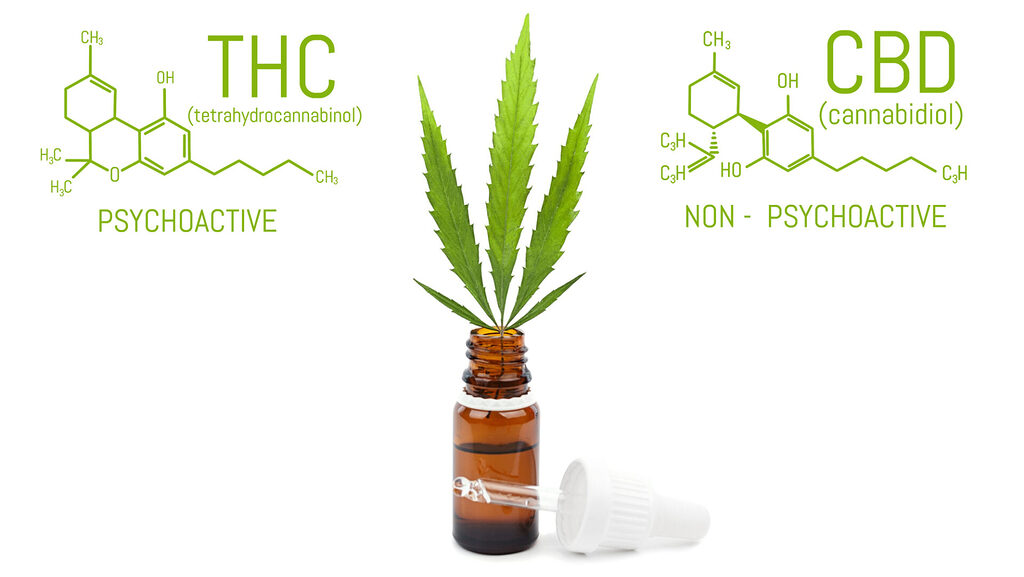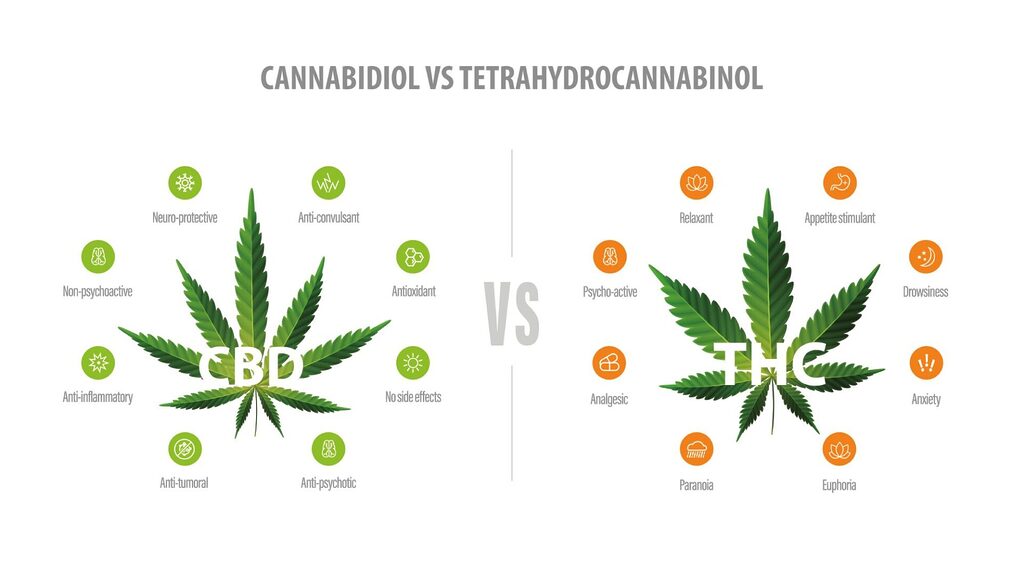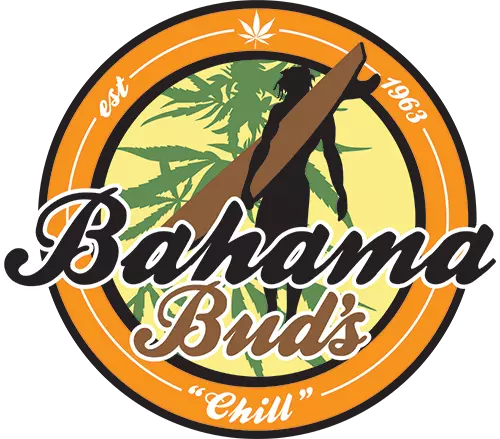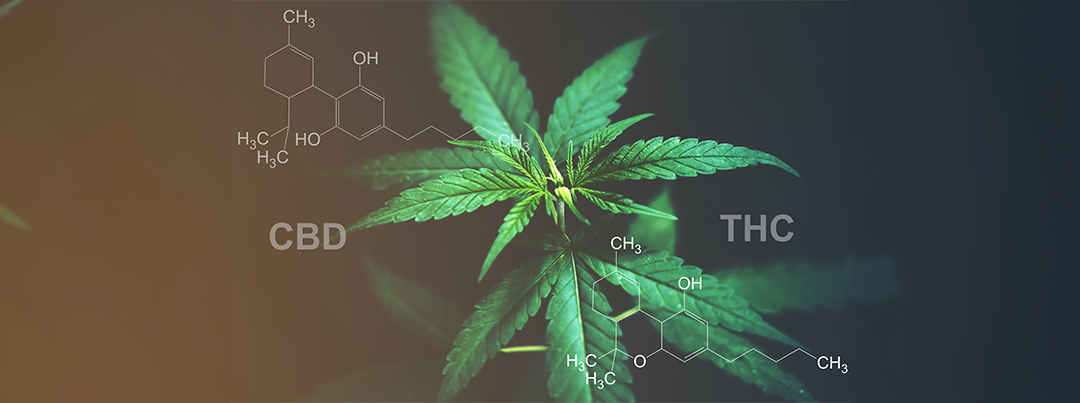Stepping into the wide world of cannabis for the first time can feel a bit overwhelming. The sights, smells and jargon that accompany the dispensary experience are a lot to take in.
Don’t worry, you’re not in it alone. In this guide, we’re going to go back to basics and explore two compounds at the heart of cannabis — THC and CBD.
These two plant cannabinoids are responsible for the myriad effects and therapeutic benefits of cannabis. The more you know about what they do and how they differ, the more confident and informed your choices will be.
Whether you’re seeking pain relief, relaxation or just a new experience, understanding THC and CBD is your first step toward becoming a cannabis pro.
THC and CBD: What’s the Difference?
First, some definitions.
- THC. Delta-9-tetrahydrocannabinol, or THC, is the psychoactive compound in the cannabis plant responsible for the “high” sensation.
- CBD. Cannabidiol, or CBD, is known for its therapeutic properties, like easing pain.
Often, you’ll find strains of marijuana and cannabis products that contain both THC and CBD in varying quantities. While all THC strains have some CBD, CBD isolates contain only CBD with trace amounts of THC or none at all.
THC Basics
THC is probably the most well-known compound in cannabis. It can be found in the resin of the marijuana bud. THC interacts with your body’s endocannabinoid system to release dopamine and create the euphoric high sensation that marijuana is so famous for.
When you ingest marijuana, the THC compounds bind to your body’s CB1 and CB2 receptors inside your brain and nervous system. They can create varied effects, from sleepiness to hunger and pain reduction. What you experience is dependent on the strain and potency of the marijuana you’re using.
Different strains of marijuana have different levels of THC. It’s a good idea for beginners to start low and build up to more potent varieties. Your budtender will be able to guide you to the best strain for you.
CBD Basics
CBD can be found in both hemp and marijuana. Hemp is a type of cannabis plant that contains less than 0.3% THC, while marijuana has higher levels of THC. When CBD is derived from hemp, it has only trace amounts of THC. Marijuana-derived CBD may contain more THC.
CBD comes in three general categories: full spectrum, broad spectrum and CBD isolate. The first two contain all the components of a cannabis plant, including varying amounts of THC. CBD isolate is the purest form of the cannabinoid and only contains CBD.
CBD is considered a non-intoxicating “multi-target” compound, meaning it has been shown to interact with various receptors throughout the body. People use CBD for all kinds of reasons, including relaxation, pain relief and relief from inflammation or anxiety.
If you’re new to cannabis, ease into using CBD for therapeutic properties. Ask your budtender about the best products and delivery modalities.
What’s the Difference Between THC and CBD?
While THC and CBD both come from the cannabis plant, their chemical structures are unique. This influences the effects each has on your brain and body when ingested.

At the chemistry level, THC and CBD differ in their molecular structure. Both are made up of 21 carbon atoms, 30 hydrogen atoms and two oxygen atoms (C21H30O2), but the way they’re arranged is different.
It’s this structure that influences how they interact with your body’s endocannabinoid system. CBD does not cause any of the mind-altering effects associated with THC. This means you’re not going to get “high” from CBD-only or CBD-forward products. THC triggers extra dopamine production, whereas CBD is thought to affect serotonin levels.
Getting Started With CBD
Even if you’re a newbie to the cannabis world, you’ve likely noticed CBD-infused products popping up all over the country. This is in part due to the 2018 Farm Bill that changed the way the U.S. government classifies certain hemp products.
The bill legalized the sale of hemp products as long as they contain no more than 0.3% THC by dry weight.
This means that even outside of Oregon (one of the 25 states where marijuana is legal for recreational sale and use), CBD products are readily available and legal for consumption.
You’ll find CBD in many forms, including:
- Oil
- Lotion
- Tincture
- Vape juice
- Gummies and other edibles
- Capsules
CBD vs. Hemp Seed Oil
With the rise in CBD popularity and availability, you may encounter products that claim to contain CBD but actually are made from hemp seed oil.
Hemp seed oil — made by cold pressing hemp seeds — is a trendy ingredient in skincare and health food products. You can tell the difference by looking beyond the words on the packaging — which may be misleading — and going directly to the ingredients list.
CBD products will contain words like “cannabidiol” or “full-spectrum hemp,” while those made with hemp seed oil will list “cannabis sativa seed oil.”
Getting Started With THC
The best place to start if you’re cannabis-curious is your local dispensary. Knowledgeable budtenders can offer guidance on the best strains, doses and consumption techniques.
Today’s THC hits come in a wide range of products and packages, including:
In addition to the THC and CBD levels, you’ll also want to take into consideration how the different strains (Indica vs. Sativa) and terpenes affect your high. Don’t be afraid to come in with questions.
Our budtenders live and breathe (literally) all things weed and are happy to help you find the products best suited to you and your needs.
THC vs. CBD: Which Is Right for You?
The best product for you is the one that meets your needs. If you suffer from anxiety or physical ailments like chronic inflammation, you may find relief with CBD products. If you’re looking to feel the psychoactive effects of marijuana, THC is the way to go.

The good news is you don’t have to choose! You can dabble in one or both types separately and together. Experimenting with different ratios of THC and CBD can help you find the right balance.
Whatever you choose, make sure to start with small doses, especially when trying new combinations.

